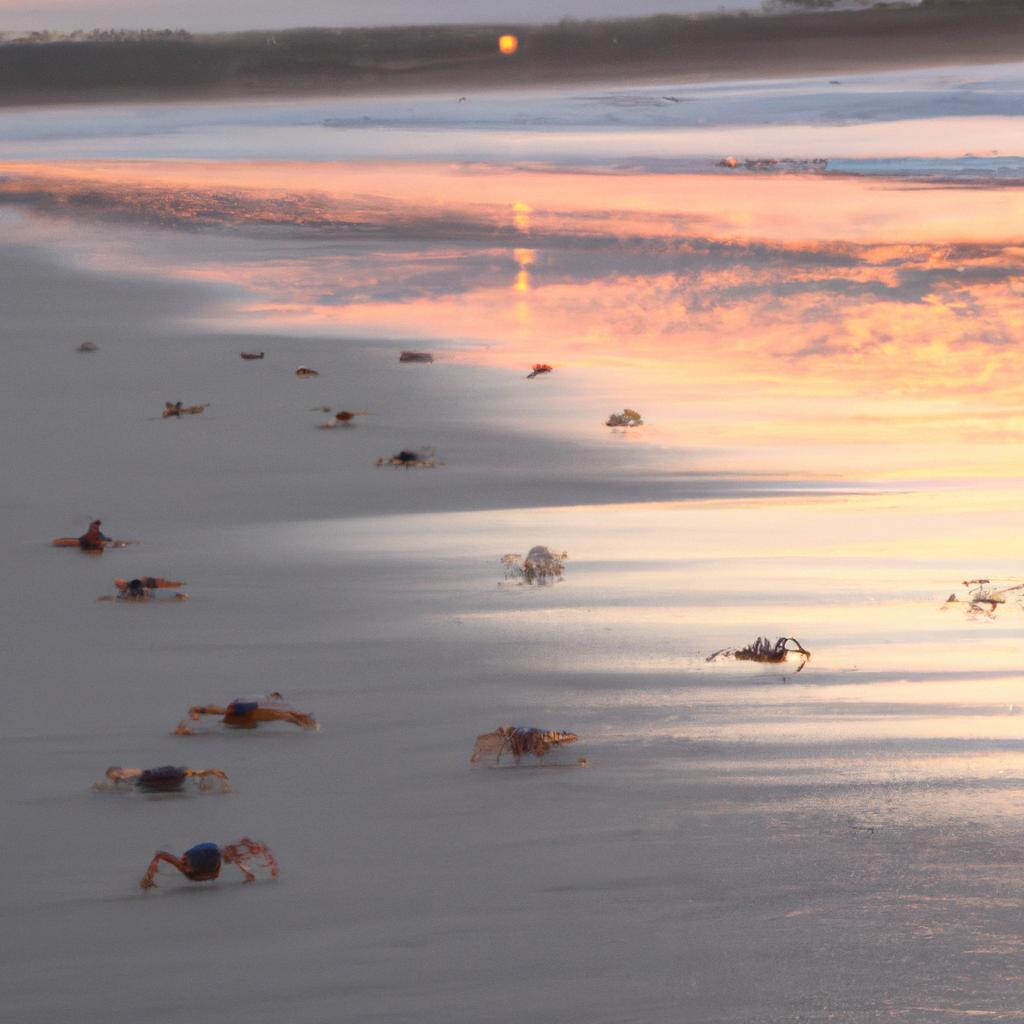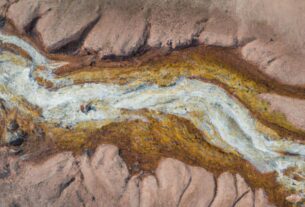When we think of migration, we often imagine birds, fish, and mammals. However, did you know that crabs also have their own migration pattern? Australian crab migration is a captivating natural phenomenon that has captured the attention of researchers and nature enthusiasts alike.
Crabs play a vital role in the ecosystem, and their migration patterns are crucial for maintaining a healthy environment. Understanding the factors that affect crab migration and their behavioral patterns is essential for conservation efforts and the sustainable management of crab populations.
Join me as we delve deeper into the world of Australian crab migration. We will explore the different species of crabs found in Australia, the factors that influence their migration, and the routes they take. Along the way, we will also discuss the implications of crab migration for the ecosystem and the economy.
Australian Crab Species
Australia is home to a remarkable variety of crab species, each with its unique physical and behavioral characteristics. Let’s take a closer look at some of the most well-known crab species found in Australia.
Blue Swimmer Crab
The blue swimmer crab, also known as the sand crab, is one of the most popular crab species in Australia. Recognized by its blue-green shell and distinctive paddle-shaped rear legs, this species can swim in water. Blue swimmer crabs inhabit estuaries, bays, and coastal waters along the Australian coastline. They are famous for their sweet and delicate meat, making them a sought-after seafood delicacy.
Mud Crab
Mud crabs are another beloved species in Australia, known for their large size and delicious meat. With a dark brown or green shell and powerful claws, mud crabs are formidable hunters and defenders. They inhabit mangroves, estuaries, and tidal creeks along the northern coast of Australia. Mud crabs are also renowned for their unique migration patterns, traveling long distances to mate and lay their eggs.
Spanner Crab
The spanner crab, also called the red frog crab, is a unique species found in the waters off the eastern coast of Australia. This crab species stands out with its red or orange shell and long, spindly legs. Spanner crabs dwell in sandy and muddy seabeds and are often caught using traps or nets. They are prized for their sweet and delicate meat, making them a popular choice for gourmet dishes.
Understanding the behavioral and physical characteristics of each crab species is crucial for studying their migration patterns. In the next section, we will explore the factors that affect crab migration in Australia.
Factors Affecting Crab Migration
Crab migration patterns are influenced by a range of factors, both natural and human-made. Understanding these factors is crucial for devising effective conservation strategies and maintaining healthy crab populations.
Environmental Factors
Environmental factors play a significant role in crab migration. Temperature, salinity, and water quality all contribute to crab behavior. Some crab species are sensitive to temperature changes and will migrate to cooler waters during the summer months.
Salinity levels also impact crab migration. Crabs living in estuaries or brackish water habitats may migrate to areas with more stable salinity levels during periods of drought or heavy rainfall.
Water quality is another important factor influencing crab migration. Pollution and human activities can alter water quality, making it unsuitable for crab habitats. This forces crabs to migrate to other areas in search of suitable living conditions.
Natural Phenomena
Natural phenomena, such as tides, currents, and storms, can also influence crab migration patterns. Certain crab species are more active during high tide and will migrate to areas with more favorable tide conditions.
Crab migration can also be affected by currents, with some species more likely to migrate during periods of strong currents. Storms, with their high winds and heavy rainfall, can significantly impact crab migration by altering their patterns.
Human Activities
Human activities, including development, pollution, and overfishing, can have a detrimental effect on crab habitats and migration patterns. Dredging and land reclamation activities can destroy vital crab habitats, while pollution can render water unsuitable for crab populations. Overfishing depletes crab populations, forcing them to migrate in search of food and suitable living conditions.
As we can see, the factors that affect crab migration are complex and multifaceted. By understanding these factors, we can develop effective conservation strategies to maintain healthy crab populations and protect their habitats.
Timing and Routes of Crab Migration
Crab migration in Australia is a complex phenomenon that varies depending on the species and region. Understanding the timing and routes of crab migration is essential for the conservation and management of crab populations.
The Seasonal Timing of Crab Migration in Different Regions of Australia
Crab migration patterns in Australia are influenced by the region’s climate and the species’ breeding cycle. In northern Australia, the migration of blue swimmer crabs occurs during the wet season, typically running from November to April. During this time, the crabs move from estuaries to coastal waters to breed.
In contrast, the migration of sand crabs in southern Australia takes place during the winter months, from May to August. These crabs move from shallow waters to deeper waters to spawn.
The Routes and Distances Covered by Migrating Crabs
Crabs migrate from one habitat to another to feed, breed, or seek shelter. The routes they take vary depending on the species and region. For instance, during the migration of blue swimmer crabs in northern Australia, they move from mangroves to the coast, covering distances of up to 50km.
Sand crabs in southern Australia, on the other hand, migrate from shallow waters to deeper waters, covering a distance of up to 20km. The routes taken by crabs are not linear, as they often move in different directions to avoid predators and find suitable habitats.
Geography and habitat availability play a crucial role in crab migration. Crabs require suitable habitats for feeding, breeding, and shelter. Changes in habitat structure due to human activities, such as land reclamation, can alter crab migration patterns and affect their survival.
In conclusion, understanding the timing and routes of crab migration is crucial for the sustainable management of crab populations. By studying the migration patterns of crabs, we can identify the factors that affect their survival, conservation, and management.
Implications of Crab Migration
Crab migration has significant implications for both the environment and the economy. Let’s take a closer look at the ecological and economic impacts of crab migration and the conservation efforts in place to protect these fascinating creatures.
Ecological Importance of Crab Migration for the Ecosystem
Crabs play a critical role in maintaining the balance of the ecosystem. They are scavengers and predators, feeding on dead and decaying matter, as well as small animals, algae, and plants. Crab migration patterns help distribute nutrients and energy throughout the ecosystem, ensuring the survival of various species.
Moreover, crabs help maintain the health of estuaries and mangrove forests. Their burrowing activities aerate the soil, allowing oxygen to reach plant roots, and their waste products provide essential nutrients for plant growth. Crabs also prevent soil erosion and maintain shoreline stability.
Economic Impact of Crab Migration on Fishing and Tourism Industries
Crab fishing is a significant source of income for many coastal communities in Australia. Commercial crab fishing generates millions of dollars annually, providing employment opportunities for local fishermen and contributing to the economy. The migration patterns of crabs are essential for the sustainability of the fishing industry, and overfishing can significantly impact crab populations.
In addition to fishing, crab migration attracts tourists to Australia. Every year, thousands of nature enthusiasts visit the country to witness the fascinating natural spectacle of crab migration. This ecotourism industry provides a significant boost to the local economy, supporting small businesses and creating job opportunities.
Conservation Efforts to Protect Crab Habitats and Migration Patterns
Given the importance of crab migration for the ecosystem and the economy, various conservation efforts are in place to protect these creatures. These efforts include establishing marine parks, implementing fishing regulations, and restoring degraded habitats.
Furthermore, researchers are studying the behavior and migration patterns of crabs to gain a deeper understanding of their ecology and the factors that affect their survival. This knowledge can inform conservation efforts and promote the sustainable management of crab populations.
In conclusion, Australian crab migration has significant ecological and economic implications, underscoring the importance of protecting these creatures and their habitats. Through conservation efforts and sustainable management practices, we can ensure the preservation of this unique natural phenomenon for future generations to enjoy.
Thank you for joining me on this journey to discover the wonders of Australian crab migration. Stay tuned for more exciting articles on TooLacks, your go-to source for news on nature, gardening, and animals. TooLacks



